#SMARTGoals
Explore tagged Tumblr posts
Text
"Physical Self"
I want to grow my physical self by adopting a healthy lifestyle, including regular exercise and balanced nutrition, to improve my overall well-being and increase my energy levels. By doing so, I aim to enhance my physical strength, endurance, and flexibility, allowing me to live a more active and fulfilling life.

2 notes
·
View notes
Text




🌸 I Am Open to Honest Love 🌸 Honest love begins with the courage to be authentic with ourselves and others. This journey has taught me that honesty isn’t always easy, but it’s essential for growth.
🌱 Learning to Be a Better Person: Being honest with myself helped me recognize areas for improvement and embrace my imperfections. It’s through self-awareness and compassion that I’ve opened the door to authentic connections.
🎯 Setting Goals for Success: ✨ Specific: Share my true feelings with loved ones. 📏 Measurable: Have at least one meaningful conversation weekly. 🎯 Achievable: Start small, focusing on one person at a time. 📌 Relevant: Deepen trust and connection. ⏳ Time-bound: Reflect on progress every month.
💖 Taking Charge of My Health: Emotional honesty improves not just relationships but also my mental and physical well-being. Through mindful practices like journaling, self-care routines, and open communication, I feel more aligned and at peace.
But sometimes, honesty and growth feel like an uphill battle, like something unseen pulling me back. Temptations, fears, and self-doubt try to shake me. That’s when I remind myself to keep moving forward, to stay in the light.
🎶 "Gravity is working against me... Gravity wants to bring me down." – John Mayer
🌟 Honest love is transformative. It begins with ourselves and radiates outward. What steps are you taking to embrace honest love? Let’s grow together. 🌿✨
youtube
#HonestLove#PersonalGrowth#SelfLoveJourney#Authenticity#SMARTGoals#Wellness#EmotionalHealth#MindfulLiving#SelfCare#GrowthMindset#UTSFinalOutput#Youtube
5 notes
·
View notes
Text
🎯 Jak wyznaczać cele chcąc osiągnąć sukces❓

✅ Zidentyfikuj metody. ✅ Weź sprawy w swoje ręce i zacznij działać!
Chcesz wiedzieć, w jaki sposób skutecznie wytyczać cele i osiągnąć sukces? 🎯 Sprawdź wypróbowane metody, które pomogą Ci przekuć marzenia w rzeczywistość! Przeczytaj nasz najnowszy artykuł i dowiedz się, jak krok po kroku realizować swoje plany.
➡️ Kliknij i przeczytaj dziś! 👉👉👉 https://www.adfinanse.pl/jak-wytyczac-cele-chcac-osiagnac-sukces/
#AdFinanse#Finanse#FinanseOsobiste#sukces#cele#Planowanie#PracaNadSoba#Inspiracja#CeleSMART#DrogaDoSukcesu#OsiagnijSukces#WytyczanieCelow#RozwojOsobisty#Motywacja#WyznaczanieCelow#SmartGoals
3 notes
·
View notes
Text









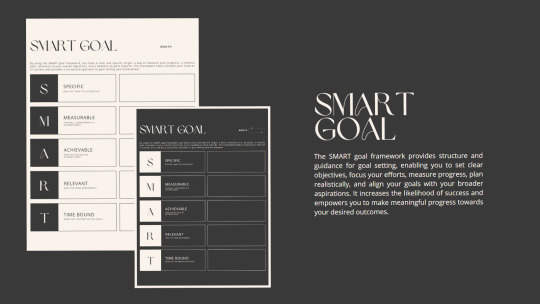
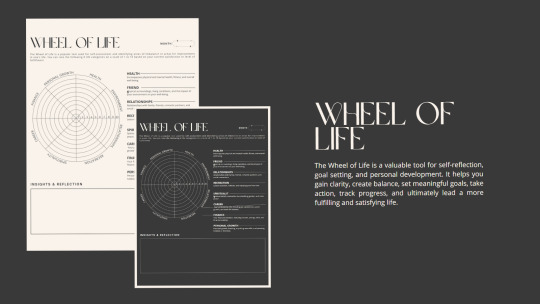

Hey guys,
I'm thrilled to share that I'm offering a unique digital planner/journal that I personally designed. What makes it special is that it's undated, saving you the hassle and expense of purchasing new planners each year. Additionally, I've included various useful pages to assist you in setting and managing your day-to-day goals and activities.
Upon purchasing, you'll receive:
An aesthetically pleasing title page to set your yearly goals.
Monthly calendars with dedicated space for words of affirmation to keep you motivated.
Daily and weekly planners for effective task management.
A 30-Day challenge section to embark on personal growth journeys.
A budget tracker to help you monitor your finances.
SMART Goal templates to guide you in setting specific, measurable, achievable, relevant, and time-bound objectives.
The Wheel of Life, a tool to assess and balance various areas of your life.
The digital planner/journal includes a total of 19 pages available in both dark and light modes, providing options to suit your preferred visual style.
This comprehensive digital planner/journal will support you in staying organized, motivated, and focused on your goals.
#digitalplanner#digitaljournal#undatedplanner#goalsetting#taskmanagement#productivity#personalgrowth#financetracker#SMARTgoals#organization#motivation#focus#selfimprovement#lifebalance#aestheticdesign#dailyplanner#weeklyplanner#monthlycalendar#30daychallenge#digitalart#digitaldesign#creativeplanning#lifestyleplanner#ipad planner#goodnotes#notability#pdf planner
20 notes
·
View notes
Text
What is the Best Technique to Lose Weight for Beginners
Introduction
Losing weight can feel like an overwhelming task, especially if you're just starting out. With so many diets, exercises, and tips out there, where do you begin? Let's break it down into simple, actionable steps that can help you achieve your weight loss goals without feeling like you're running a marathon on day one.
Understanding Weight Loss
The Science Behind Weight Loss
Weight loss boils down to a simple principle: you need to burn more calories than you consume. This creates a calorie deficit, prompting your body to use stored fat for energy, which leads to weight loss. It's a balance of diet and exercise, with each playing a crucial role.
Common Misconceptions
There are plenty of myths surrounding weight loss. Some people think you need to starve yourself, while others believe you must spend hours in the gym daily. The truth is, neither extreme is necessary or sustainable. It's about finding a balance that works for you.
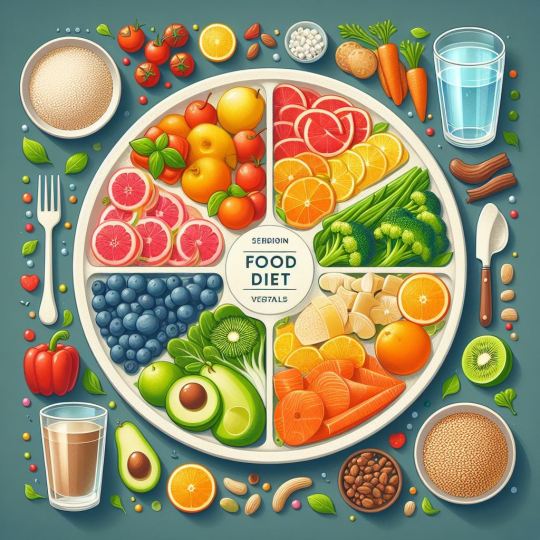
Setting Realistic Goals
SMART Goals
Setting goals is essential for tracking progress and staying motivated. Use the SMART criteria to set goals that are Specific, Measurable, Achievable, Relevant, and Time-bound. Instead of saying, "I want to lose weight," try, "I want to lose 5 pounds in the next month by exercising three times a week and reducing my sugar intake."
Short-term vs. Long-term Goals
Short-term goals keep you motivated, while long-term goals help you stay focused on the bigger picture. A mix of both can provide continuous motivation and a clear roadmap to success.
Dietary Changes
Balanced Diet
A balanced diet includes a variety of foods to ensure you're getting all the necessary nutrients. Focus on incorporating more fruits, vegetables, lean proteins, and whole grains into your meals. Avoid fad diets that promise quick fixes but often lack essential nutrients.
Portion Control
Even healthy foods can contribute to weight gain if consumed in large quantities. Learn to listen to your body's hunger and fullness cues. Using smaller plates and paying attention to portion sizes can help you eat less without feeling deprived.
Healthy Snacking
Snacking isn't bad if done right. Choose healthy options like nuts, fruits, or yogurt instead of chips or cookies. These snacks can help keep your metabolism running and prevent overeating at meal times.
Hydration
Staying hydrated is crucial for overall health and can aid in weight loss. Sometimes, our bodies confuse thirst with hunger, leading to unnecessary snacking. Aim to drink at least eight glasses of water a day.
Exercise for Beginners
Importance of Physical Activity
Exercise helps burn calories, builds muscle, and boosts your metabolism. It also has numerous health benefits, including improved mood and energy levels.
Finding the Right Exercise
Find an exercise you enjoy, whether it's walking, swimming, dancing, or cycling. You're more likely to stick with an activity if you find it fun and engaging.
Starting Slow
If you're new to exercise, start slow to avoid injury and burnout. Begin with 20-30 minutes of moderate activity a few times a week, gradually increasing the intensity and duration as your fitness improves.
Consistency is Key
Consistency is more important than intensity. Regular, moderate exercise is more effective and sustainable than sporadic, intense workouts. Make physical activity a regular part of your routine.
Mindset and Motivation
Staying Motivated
Motivation can wane over time, so it's important to find ways to keep it alive. Set regular, small goals, reward yourself for achievements, and remind yourself why you started.

Handling Setbacks
Setbacks are a natural part of any journey. Instead of getting discouraged, view them as learning opportunities. Identify what caused the setback and how you can avoid it in the future.
Building a Support System
Having a support system can make a big difference. Whether it's friends, family, or a weight loss group, having people to share your journey with can provide encouragement and accountability.
Tracking Progress
Importance of Tracking
Tracking your progress helps you stay focused and motivated. It allows you to see how far you've come and what changes you might need to make.
Using Technology
There are numerous apps and devices that can help you track your food intake, exercise, and progress. These tools can provide valuable insights and keep you accountable.
Adjusting Your Plan
As you progress, you may need to adjust your plan. If you hit a plateau or your goals change, reassess your diet and exercise routine to ensure they still align with your objectives.
Conclusion
Losing weight is a journey that requires patience, consistency, and a positive mindset. By understanding the basics, setting realistic goals, making dietary changes, incorporating exercise, staying motivated, and tracking your progress, you can achieve your weight loss goals in a sustainable and healthy way.
FAQs
What is the best diet for beginners?
A balanced diet that includes a variety of fruits, vegetables, lean proteins, and whole grains is best. Avoid extreme diets and focus on portion control and healthy choices.
How often should I exercise?
Aim for at least 150 minutes of moderate aerobic activity or 75 minutes of vigorous activity per week, along with muscle-strengthening exercises on two or more days per week.
How do I stay motivated?
Set small, achievable goals, reward yourself for progress, and surround yourself with a supportive network. Regularly remind yourself of your reasons for wanting to lose weight.
What should I do if I hit a plateau?
Reassess your diet and exercise routine. Sometimes our bodies adapt, so you might need to increase the intensity of your workouts or adjust your calorie intake.
Are there any supplements I should consider?
While it's best to get nutrients from food, some supplements like multivitamins, omega-3s, or protein powder can be helpful. Always consult with a healthcare professional before starting any supplement regimen.
#WeightLossJourney#healthyliving#BeginnerFitness#DietAndExercise#HealthyEating#FitnessGoals#LoseWeight#Wellness#WeightLossTips#Nutrition#HealthyHabits#ExerciseRoutine#PortionControl#Hydration#Motivation#FitnessForBeginners#SmartGoals#BalancedDiet#TrackYourProgress#StayActive
3 notes
·
View notes
Text
Master Strategic Planning for Organizational Success! 🚀
The Professional Strategic Planning course equips you with the tools to create and execute clear, actionable strategies that drive sustainable growth and success.
Why Attend? ✅
Master the strategic management process
Learn to set SMART goals and KPIs
Develop competitive strategies for long-term success
Align your vision with actionable plans
Earn a certification in strategic planning
Key Takeaways:
Understand the step-by-step strategic planning process
Formulate impactful vision, mission, and value statements
Create and manage strategic initiatives for execution
Enroll today and gain the expertise to lead your organization towards strategic success!
#StrategicPlanning
#Leadership
#BusinessStrategy
#OrganizationalGrowth
#KPI
#VisionAndMission
#CompetitiveAdvantage
#SustainableGrowth
#ActionablePlans
#SMARTGoals
#StrategicManagement
#ProfessionalDevelopment
#StrategyExecution
#BusinessLeadership
#ManagementTraining
#BusinessSuccess
#StrategicPlanning#Leadership#BusinessStrategy#OrganizationalGrowth#KPI#VisionAndMission#CompetitiveAdvantage#SustainableGrowth#ActionablePlans#SMARTGoals#StrategicManagement#ProfessionalDevelopment#StrategyExecution#BusinessLeadership#ManagementTraining#BusinessSuccess
0 notes
Text
A SMART Goals Workbook is a powerful tool that can transform vague aspirations into achievable outcomes. By using SMART Goals PDFs, SMART Goals Worksheet PDFs, and SMART Goals Generators, you can streamline your goal-setting process and stay on track.For leaders, Leadership SMART Goals help guide teams toward success. .
#SMARTGoals#GoalSetting#SMARTGoalsWorkbook#Productivity#OKRvsSMARTGoals#LeadershipGoals#SMARTGoalsPDF#GoalTracker#SuccessMindset#PersonalDevelopment#BusinessSuccess#SMARTGoalsGenerator#LeadershipDevelopment#TimeManagement#SelfImprovement
0 notes
Text
The Guide to Setting SMART Project Objectives and Goals
Set clear SMART project objectives by ensuring they are Specific, Measurable, Achievable, Relevant, and Time-bound. Define clear milestones, track progress with KPIs, and align goals with business growth. Use this guide to enhance project success and efficiency.

0 notes
Text

Smart Goals Examples for Work
create the roadmap to progress, and also contribute to the final objective of the organization.Let us we will explore smart goals examples for work.
#smartgoals#workgoals#goalsetting#productivity#achievegoals#businessgoals#careergrowth#timemanagement#performancegoals#professionaldevelopment#smartobjectives#workperformance#goalplanning#success#motivation
0 notes
Text
"Physical Self"
youtube
I've experienced significant growth in my physical self through regular exercise, balanced nutrition, and self-care. This growth has led to increased strength, endurance, and flexibility, allowing me to tackle daily tasks with more energy and confidence. As a result, I've noticed improvements in my overall health and well-being, including better sleep and mental clarity. By prioritizing my physical self, I've become a stronger, healthier, and more resilient version of myself.

0 notes
Text
I WANT TO GROW EXPERIENCE WITH DIGITAL SELF
youtube
I would like to focus on growing my digital self. With technology constantly advancing, it provides countless opportunities to learn, connect, and develop new skills. I feel that prioritizing digital growth will help me remain adaptable and engaged with the ever-changing world.
SMART GOAL THAT WILL HELP ME TO ACHIEVE IT
Specific: I will improve my digital skills by completing an online course on digital literacy and technology tools.
Measurable: I will complete at least one course module per week.
Achievable: I will set aside 2 hours every week to work on the course.
Relevant: Enhancing my digital skills will help me stay updated with technology and improve my ability to connect and learn online.
Time-bound: I will finish the course in 3 months.
1 note
·
View note
Text
Spiritual Self - Understanding the Self
youtube
Which do you want to experience growth with?
SPIRITUAL SELF
If I had to choose an area for growth, I would focus on my spiritual self. I believe that spiritual growth influences all other aspects of life. It helps me develop a stronger sense of purpose, understanding, and connection with others. As I grow spiritually, I’m better able to navigate my physical, material, sexual, political, and digital selves. I see spiritual growth as the base for a more balanced and meaningful life, which also helps me grow in other areas. What about you? Which area do you feel drawn to grow in right now?
A SMART goal to support my spiritual growth could be:
Specific: I will spend 15 minutes each morning in meditation or prayer to deepen my spiritual connection.
Measurable: I will keep a daily log to track my meditation or prayer sessions.
Achievable: Starting with 15 minutes is realistic, and I can gradually extend the time as I become more comfortable.
Relevant: This goal aligns with my aim to grow spiritually, helping me develop a greater sense of purpose, empathy, and connection.
Time-bound: I will follow this practice for 30 days, then review my progress to determine if I want to continue or make adjustments.
This goal provides a clear and achievable plan to support my spiritual development while being measurable and time-focused
1 note
·
View note
Text
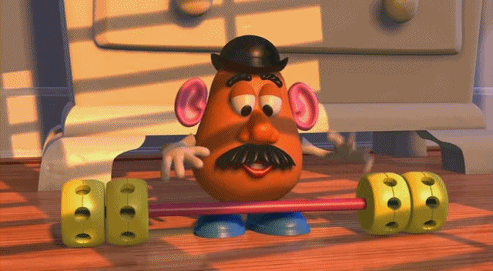
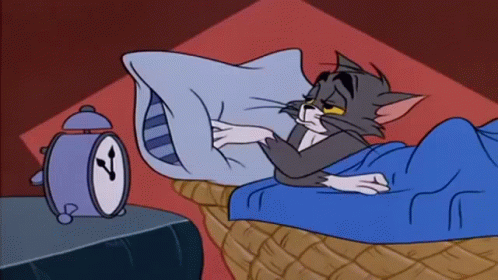
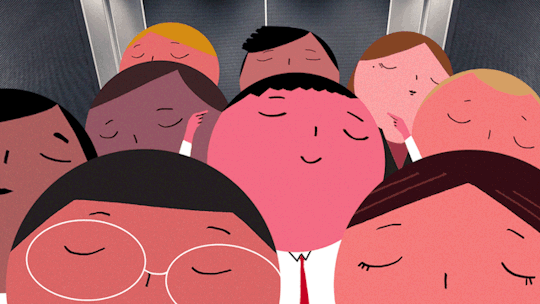
📌 My Journey to a Healthier Me: SMART Goals for Physical Growth 💪✨
🌟 Focusing on My Physical Well-being Improving my physical health has been an ongoing journey, and I'm proud to say that I’ve already lost 9kg in the past 2 months! I started at 86kg, and now I’m at 77kg—but my journey doesn’t stop here.
🚀 My SMART Goal for Physical Growth
✅ S (Specific): I will continue exercising regularly, ensure I get 7–8 hours of sleep, and manage stress effectively to improve my overall health.
✅ M (Measurable): I will work out 4–5 times a week, prioritize consistent sleep, and apply stress management techniques whenever I feel overwhelmed.
✅ A (Achievable): I have already lost 9kg, so I will stay consistent to lose weight at a healthy pace, improve my sleep, and reduce stress.
✅ R (Relevant): This goal is important to me because I want to reach a normal BMI, feel more energized, and maintain a healthy, stress-free lifestyle.
✅ T (Time-Bound): My goal is to reach a normal BMI by the end of this year, establish a consistent sleep routine within the next 3 months, and develop long-term habits for stress management.
💡 Why This Matters: I’ve struggled with lack of sleep, stress, and being overweight, but I am determined to take control of my health and build a sustainable, balanced lifestyle.
✨ How do you take care of your physical well-being? Let’s motivate each other! 💬💖
#HealthJourney#FitnessGoals#SMARTGoals#SelfImprovement#WeightLossJourney#HealthyLifestyle#UTSFinalOutput
3 notes
·
View notes
Text
5 Steps to Overcome Procrastination Using SMART Goals
Struggling with procrastination? 🚀 Set SMART goals to take action! Learn how to make your goals Specific, Measurable, Achievable, Relevant, and Time-bound so you can stop delaying and start achieving. 💪 #Productivity #SMARTGoals #NoMoreProcrastination
We’ve all been there. We put things off until the last minute. We tell ourselves we’ll start “tomorrow.” Then, we feel guilty when nothing gets done. Procrastination is a sneaky thief of time and productivity. But here’s the good news: you can beat it by setting SMART goals. SMART stands for Specific, Measurable, Achievable, Relevant, and Time-bound. It’s a simple yet powerful method to stop…
0 notes
Text
My philosophy on goal-setting
Where's the line between a dream and a goal?
As a kid in Boy Scout leadership camp (and later on in my professional career) I was taught that the answer to this question is quite simple: A goal is S.M.A.R.T.
Specific: You can point to a concrete outcome clearly answer the question "did you achieve this goal?" with a yes or no.
Measurable: You can tell when the goal has been completed. Could you define what "complete" looks like? Or would it just go on indefinitely?
Attainable: Be real with yourself. At the current point in time with the current resources available, can this honestly be accomplished?
Relevant: Is this goal aligned with the overall outcome you want to achieve? When you ask the reason "why this goal?" can you stand behind the justification for your answer?
Timely: Does this goal fit within a realistic timeframe with a realistic deadline?
This is the part where I imagine you would expect me to lay out my goals for the creation of Psychagogue and neatly organize them into this "smart" framework. Because of course an ambition like "making the next Epic" is, on it's face, preposterous. A dream I'd think to myself, get excited for a bit, and then sigh and let it go once I see how overwhelming the scale is and how many things I just don't know how to do. Add it to the pile with the others. S.M.A.R.T. goals to the rescue, right? But honestly that's kind of boring and I don't want to do that.
So why do I even bother bringing it up? The answer is that I can't deny it's a useful framework. Even going through each point of that while writing this post, I'm seeing flashes of answers for what I have in mind. These are all useful things to think about. Bringing a dream to life requires a plan of some sort. However, when I've attempted to apply S.M.A.R.T. goals to situations in the past, it's just been... okay? It's a fine plug'n'chug paint-by-numbers system for goal-setting, but using it I've always felt a sort of clinical tension. Like, I'd use S.M.A.R.T. goals to set a quarterly OKR or something, not a long-term passion project. A real plan set in action doesn't divide neatly into these categories, and squaring the circle to cleanly make it fit loses something in the process.
That all being said, I do need a framework to transform my dream into an achievable goal. As you'll come to see in future posts, that framework for me is analysis. Analysis of knowns and unknowns, of requirements, of potential challenges, of concrete action steps. (For you corporate heads out there, it's like a SWOT analysis. Kind of. It's elements of that and elements of S.M.A.R.T. goals. My way in is a mishmash of different things that resonate with me.)
While I reserve the right to ramble on my own development blog, I think I'll leave it there for now. The next blogpost will have actual details, so stay tuned.
#PsychagogueDigitalMusical#SMARTgoals#SMART goals are effective but I don't like them#dreams#goals#my process#rambling
0 notes
Text
Track train triumph - Unlocking Your Swimming Potential with Goals and Journals
As young swimmers embark on their aquatic journeys, the importance of setting goals and maintaining a training journal cannot be overstated. Whether you’re a beginner or an experienced swimmer, understanding how to create SMART goals and track your progress can make a significant difference in your performance and overall enjoyment of the sport. What Are SMART Goals? Smart goal setting SMART…
#SwimSuccess#YoungSwimmers#YouthAthletics#AquaticJourney#CompetitiveSwimming#FitnessGoals#goalsetting#SMARTGoals#swimcoach#SwimLife#SwimmersMindset#SwimmingCommunity#SwimmingGoals#SwimMotivation#SwimPerformance#SwimTips#SwimTraining#TrackYourProgress#TrainingJournal#TrainSmart
0 notes